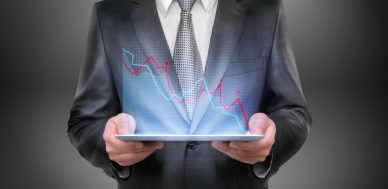Recession Seems More Likely Than Economic Growth for the U.S. Economy
It’s important to understand the economic cycle before trying to assess where the U.S. economy could be headed next. Unfortunately, as it stands, it looks like a recession is more likely than economic growth.
You see, there are four phases in an economic cycle: expansion, peak, recession, and trough.
If you pay attention to the economic data, it’s starting to look like the U.S. economy could be entering the peak phase and getting very close to a recession.
Go back to 2008/2009…
As the financial crisis was taking a heavy toll on the U.S. economy, the Federal Reserve and the U.S. government stepped in to help. The Fed printed money and the government spent money.
This worked; the U.S. economy came out of the recession by June 2009.
Then we entered a period of expansion. This expansion was considered one of the greatest recoveries in the U.S. economy since the period following the Great Depression.
It was very evident by the economic data, too.
The U.S. gross domestic product (GDP) was growing, consumer sentiment was surging, consumer spending was solid, business profits were getting bigger, home prices bounced higher, credit was expanding, stocks were soaring, and the list goes on.
U.S. Economic Data Is Turning
But remember, this could only go on for so long. Now, no matter where you look, it seems like the data is peaking. It’s warning us that a recession in the U.S. economy is nearing.
For instance, look at construction spending. In February, the annual rate for construction spending in the U.S. was around $1.3 trillion. Since December, this rate has been flat.
If you look at the growth rates in construction spending, they have been shrinking. In 2015, construction spending grew by over 10%. In 2017, there was just 4.1% growth, which was the lowest growth rate since 2012.
Look at the chart below to get some idea.
(Source: “Total Construction Spending,” Federal Reserve Bank of St. Louis, last accessed April 26, 2018.)
But look beyond construction spending; consumer spending is very similar.
In February, the real annual rate of personal consumption expenditure (think of this as consumer spending adjusted for inflation) was $12.1 trillion. Since December, it has declined.
If you look at the U.S. consumption growth rate, it’s flattening. In 2017, it increased by 2.8%, similar to in 2016. In 2015, the growth rate was 3.6%. (Source: “Real Personal Consumption Expenditures,” Federal Reserve Bank of St. Louis, last accessed April 26, 2018.)
If you look at the stock market, it also suggests that the U.S. economy could be peaking and that a recession could be nearing. For instance, look at the Dow Jones Industrial Average (DJIA). It’s down a little more than eight percent from its highs.
In times of expansion, stocks usually do well.
U.S. Economic Outlook 2018: Recession Nearing
Dear reader, peaking economic data is not good. It foretells a slowdown ahead.
I truly believe that, for the U.S. economy to avoid a recession in the coming quarters, some catalysts are needed. Sadly, there isn’t anything in the near term.
We have been told that the recent tax cuts by the U.S. government will help the economy, but we have yet to see any impacts. Also, don’t forget, interest rates are going higher. This could drag the economic growth rate lower.
I can’t help but be pessimistic about the U.S. economy, given how the economic data looks. It’s saying that a recession is likely coming sooner rather than later. In the coming months, we will know more.
In the meantime, tread lightly if you are thinking about buying stocks. If a recession becomes reality, stocks could be a very bad investment.
